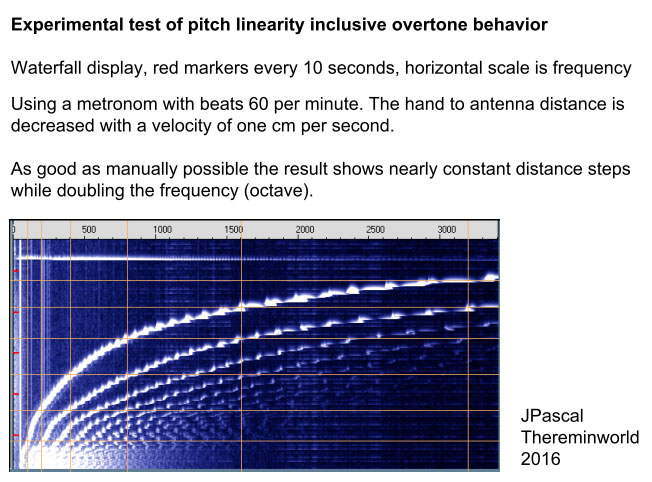"Filtering the R.F. is possible by replacing the 12k resistor with transformer (like Rockmore theremin) or by following a RC combination. You see a so filtered shape in my video on oscilloscope" - JPascal
I've had good luck (in simulation) using two RC low pass sections, with the impedance of the first 5 to 10 times lower than the second. I avoid transformers because they pick up hum, are expensive, and can be difficult to buy.
"JFets are the BF245A type, which are not more in trade, better say not more produced. Similar transistors can be used."
Ya, I used J113 in the LTSpice because they are inexpensive and readily available.
"Theremin development is like building and preparing a violin. If you want a stradivari you must invest a lot of time and experience. I am limited in both, so I take the know how primarely from the old technique. Shape form fourier analysis of historic demonstrations of RCA theremin, without vibrato and volume effects, are the basic material for me. A radical reduction of electronic components is required, I am convinced."
Waveform out of the mixer is something one should definitely spend time on.
"Playing a theremin ever begins with a tuning like violin. There is no need for stable batterie. Current is very low. I see the point, its critical for an electronic developer."
You could use a LDO regulator down to 5 or 6 volts. Of all the oscillators I've played with on the bench they all benefit tremendously from voltage regulation. It's the single easiest and most powerful stabilization technique IMO.
There are other oscillator forms with low current, better looking sine behavior, and higher voltage swing at the antenna that might work better. Having the coil supply the oscillator operating current always seems to give a flattened sine (due to reverse conduction through the FET?). Antenna voltage swing is dependent on coil Q and phase error in the drive.
"Looking on the wiring within old RCA Theremin massiv parasitic effects occour. The breadboard is thereby a good simulation of this."
There can be a strong capacitive interaction between the bottom of the breadboard and whatever you set it on, particularly metal and even wood. I put a plastic box under my breadboard to minimize this, just a couple of inches really help here.
JPascal, do you have an LC meter? I bought a cheap LC200A from eBay that works all the way down to sub pF. It can even measure antenna capacitance if you ground one lead. I'm wondering what the self capacitance of your 14mH coil is. What is the resonant frequency? Is the ferrite very temperature sensitive? If so this can lead to long-term drift (which is why I avoid ferrite in my stuff). Does the oscillator poop out when you touch the antenna? If so does it restart on its own? You might want to insulate the antenna to minimize ESD issues.



